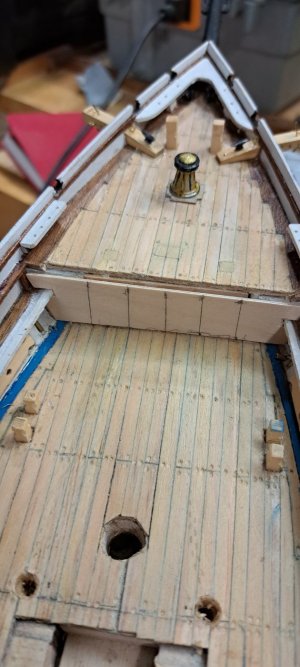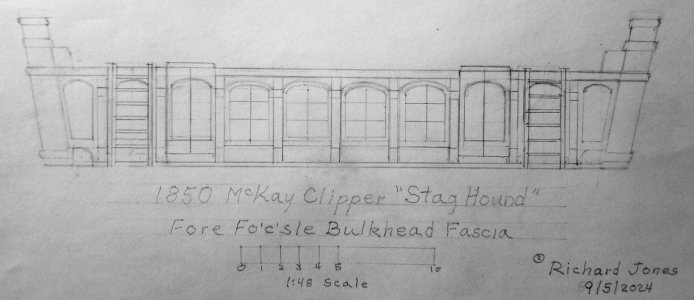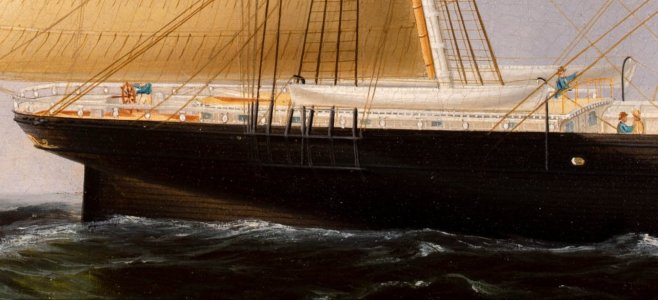Peter,
My manufacturer's guess missed by that much. My apologies to Blue Jacket. I also wonder how Ben Lankford misplaced those two water closets. Maybe it's the curmudgeonly English Major in me. When I read Duncan McLean's
Flying Fish description, I follow his context. Doing that, I get a completely different take on the front forecastle arrangement. He clearly states twin outer companions lead to quarters down below which have accomodations for one watch of the crew. Before (meaning in front of, not behind) the companions are water closets. I read that to mean downstairs, in front of the companion ladders on each side there were the ship's heads. That means
Flying Fish had an identical foreward arrangement as
Stag Hound and
Flying Cloud did. Which also moves her windlass below as well, since the forecastle bulkhead now functions as the aft wall for crew quarters below. Meanwhile, I wonder how willing Model Shipways would be to revising aspects of their plan and kit? Corrections would include, from bow to stern:
(1) add navel hoods, cutwater & more realistic flying fish figurehead to blend into both.
(2) revised forecastle as we discussed.
(3) ornate rear coach house front facade.
(4) rear coach house sides narrow to accomodate consistent working area for crew.
(5) relocate centrally mounted rear coach house companion to port side.
(6) lubber holes go fore to aft of solid top frames.
Peter,
My manufacturer's guess missed by that much. My apologies to Blue Jacket. I also wonder how Ben Lankford misplaced those two water closets. Maybe it's the curmudgeonly English Major in me. When I read Duncan McLean's Flying Fish description, I follow his context. Doing that, I get a completely different take on the front forecastle arrangement. He clearly states twin outer companions lead to quarters down below which have accomodations for one watch of the crew. Before (meaning in front of, not behind) the companions are water closets. I read that to mean downstairs, in front of the companion ladders on each side there were the ship's heads. That means Flying Fish had an identical foreward arrangement as Stag Hound and Flying Cloud did. Which also moves her windlass below as well, since the forecastle bulkhead now functions as the aft wall for crew quarters below. Meanwhile, I wonder how willing Model Shipways would be to revising aspects of their plan and kit? Corrections would include, from bow to stern:
(1) add navel hoods, cutwater & more realistic flying fish figurehead to blend into both.
(2) revised forecastle as we discussed.
(3) ornate rear coach house front facade.
(4) rear coach house sides narrow to accomodate consistent working area for crew.
(5) relocate centrally mounted rear coach house companion to port side.
(6) lubber holes go fore to aft of solid top frames.
Aspects 1-6 Are fodder for kit bashers. If enough of us revise these kits to make them more historically accurate, then perhaps a demand for a more revised and accurate kit will develop and a company like M.S. will follow suit.



















